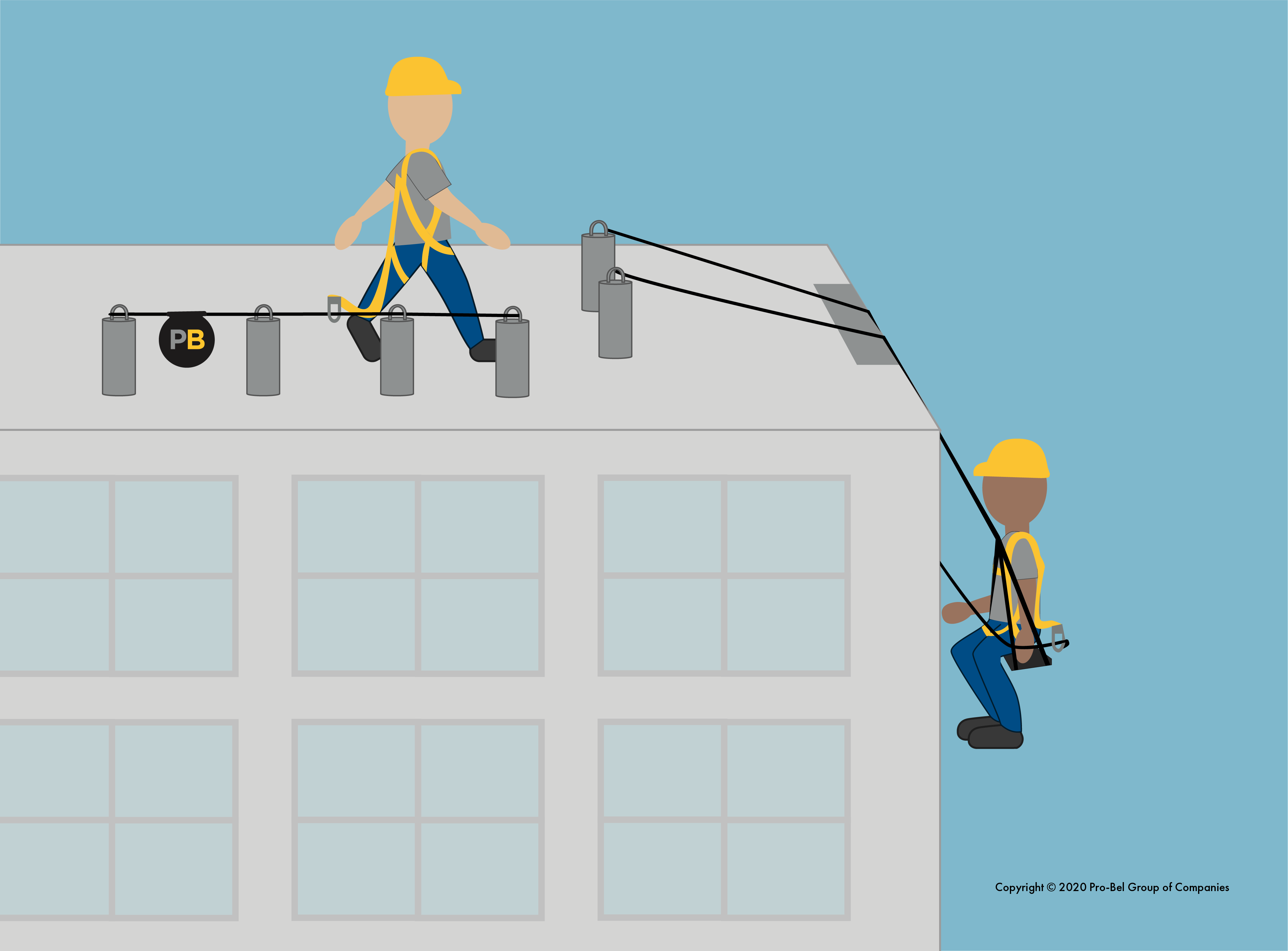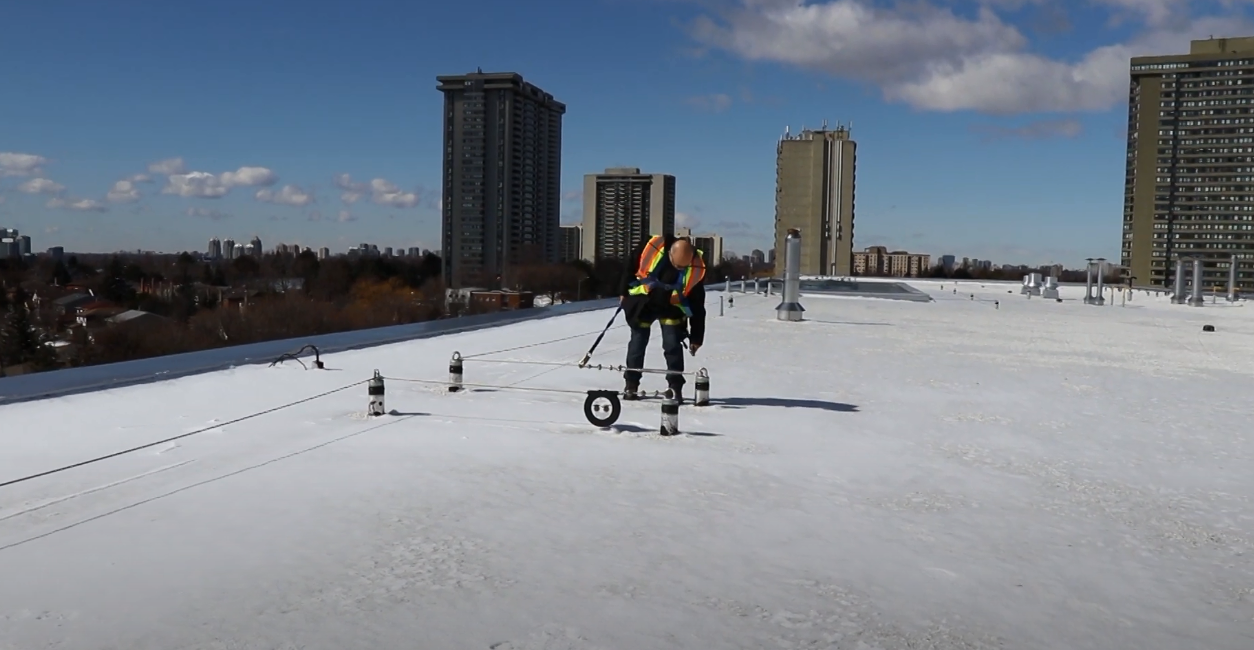Fall Protection Systems fall under 2 categories: Fall Restraint and Fall Arrest.
In any non-public area, if there is a guard (such as a parapet) less than 915mm, there is a fall hazard present. In public areas, the minimum guard height is 1100mm.

FALL RESTRAINT
Fall restraint is the first approach we design for. This begins with keeping a worker outside a fall hazard area. The fall hazard zone is anything within 2m of the unprotected roof edge of the building. Equipment will be placed outside of this zone to stop the fall from occurring. This typically can be completed with stand alone anchors or a Horizontal Life Line system (HLL) as shown in the header image and illustration. This keeps the worker safely tied off should they need to be within the fall hazard area.
FALL ARREST
Fall arrest is considered the stop of a fall if one is to occur. All codes state that the human body cannot experience more than 4 kn of force. The fall must be stopped (or arrested) within 1.5m to avoid this happening. In order to stop this fall properly, there must be at least 6m of vertical distance to stop this free fall. This height takes the lanyard length, D-ring and rope length to properly accommodate this.
We prefer to design for fall restraint first as we never want to have a worker be at risk for a fall if it can be avoided.
Share this Post




